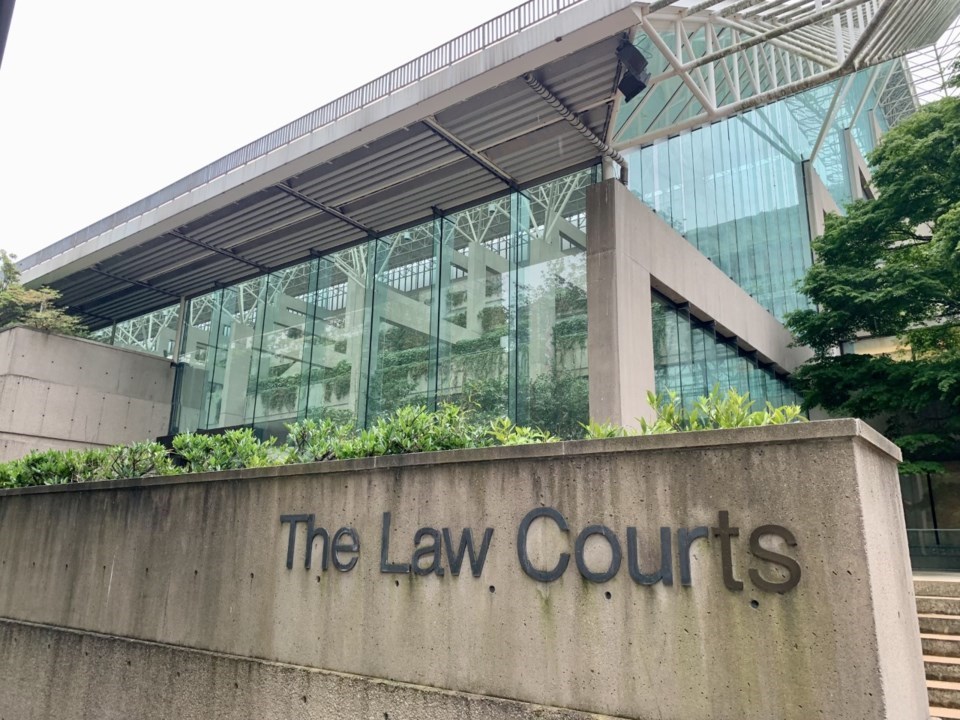More than 10 years after a teen in Gibsons became a tetraplegic after a falling tree incident, the personal injury case against the Town of Gibsons may have come to a close.
On Feb. 22, the Supreme Court of British Columbia’s Justice Adair dismissed the case against the municipality. The trial took place over multiple months in 2021 and 2022.
Mujtaba “Muj” Saloojee was 17 years old and had recently moved with his family to Gibsons when, on June 2, 2012, he was struck on the neck and back by the top portion of a dead tree. Saloojee was in White Tower Park of Upper Gibsons with some friends, and he and another young man were pushing on the dead tree when its top fell.
Following the incident, Saloojee’s “catastrophic and permanent injuries” caused him to become a tetraplegic. A list of his injuries included in a notice of civil claim filed in January 2016 include paralysis, spinal cord injuries, head and hand injuries, loss of appetite, fatigue, depression, anxiety and insomnia. The decision document states Saloojee’s life expectancy is shortened as a result, and a life-threatening condition puts Saloojee at risk of losing the ability to breathe on his own. Saloojee, now 27 years old, sought damages from Gibsons, as he said the injuries were the result of negligence and a breach of duty of the town.
“Mr. Saloojee accepts that it would be appropriate to attribute some fault to him, as well as to [Matthew] Kelly and the two other young men (Jesse Whitmore and Riley MacKenzie) who were with him on June 2, 2012 when the accident happened,” the justice’s decision states. “In closing submissions, Mr. Saloojee said that fault should be apportioned 70% to the Town, 25% to him, and 5% to the others.”
White Tower Park is a naturally forested park with some constructed trails and is owned by the Town of Gibsons. Maintenance and inspection of these trails falls under the responsibility of a parks department employee of the town. As the justice’s decision outlines, a bylaw states that no person other than a town employee or a contractor of the town may destroy, alter, damage or remove any tree. An unwritten policy followed at the time was that staff inspect only the maintained trails. Saloojee was not on a maintained trail when he was injured.
The Town of Gibsons argued that Saloojee failed to prove his case on liability.
The justice found the standard of care in the Occupiers Liability Act applies to Gibsons. It states the “owner of the park or recreation site has a duty to ensure that all persons and their property are reasonably safe while visiting the developed portion of the park or recreation site.”
“There is no question that what happened to Mr. Saloojee on June 2, 2012 was tragic and heartbreaking. However, for the reasons that follow, I have concluded that Mr. Saloojee’s case fails on liability,” Justice Adair’s decision states.
Some of Justice Adair’s decision was based on presented information regarding the definition of a dangerous tree, previous parks reports, maintenance, training and park uses.
According to the Wildlife/Danger Tree Assessor’s Course as quoted in the decision, “One cannot have a dangerous tree unless there is a target. For purposes of parks and recreation sites, targets are those established trails, camping sites, roads and facilities that are provided to the visiting public to help them safely enjoy the park or recreation site.”
The justice wrote, “I find that the standard of care did not require that Gibsons carry out a danger tree assessment in White Tower Park beyond what was being done based on the Unwritten Policy. No target or targets were identifiable in the area where the accident occurred…
“I find further that, since no danger tree assessment was required, the standard of care did not require that Gibsons either restrict access to areas of White Tower Park or post warning signs.”
She concluded that Gibsons “had satisfied its duty to take that care that, in all the circumstances, was reasonable to see that Mr. Saloojee would be reasonably safe in using White Tower Park. Accordingly, Mr. Saloojee has failed to prove that Gibsons is liable for his injuries and damage. Mr. Saloojee’s claim against Gibsons must, therefore, be dismissed.”
The notice of civil claim filed in the Supreme Court of British Columbia in January 2016 named several defendants aside from the Town of Gibsons. Proceedings against several of the defendants have since been discontinued.
The justice chose not to assess what damages and compensation might have been awarded to the plaintiff. Since the plaintiff’s counsel did not provide a submission about what order should be made regarding the remaining defendants named, the justice decided not to make an order.



